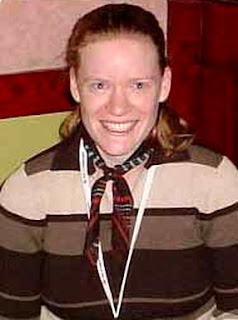"The weight of spacecraft is a key factor in the overall cost of any space mission. If we can identify better, lighter and more efficient materials and the best ways of using them, it may have a huge impact on the space programme," she explains.
The NPL led consortium will help ESA to identify nanomaterials companies with potential to contribute to the future of satellite navigation and earth observation. Furthermore, it will define how these materials can add value to real space applications. High quality and thoroughly tested smart materials will play a much greater role in future applications.
The National Physical Laboratory will be joined in the consortium by specialist space consultancy ESYS and the Institute of Nanotechnology. The consortium's report is due in August 2009. It will allow ESA to review potential applications of nanomaterials for space applications and missions and quantify the resulting improvements.
Dr Constantinos Stavrinidis, Head of Mechanical Engineering at ESA explained that NPL won the contract for its long standing expertise in material science and their knowledge of the space industry.
"NPL's knowledge and experience in both areas make it a natural partner to help ESA plan the future of materials for space," he says. "By July 2009, we will know how the space programme can use nanomaterials in the next decade."
###
National Physical Laboratory
NPL is a world-leading centre of excellence in developing and applying the most accurate measurement standards, science and technology available to man.
For more than a century we have developed and maintained the nation's primary measurement standards. These standards support an infrastructure of traceable measurement through the UK and the world that ensures accuracy and consistency.
The NPL mission affects many aspects of our life. Good measurement improves productivity and quality; it underpins consumer confidence and trade, and is vital to innovation. We undertake research and share our expertise with thousands of organisations and individuals to help enhance economic performance and the quality of life.
Our services range for free technical advice, joint projects, training, secondments, problem solving, consultancy, contract research to highly accurate UKAS accredited measurement services.
The National Physical Laboratory is operated on behalf of the DIUS by NPL Management Limited, a wholly owned subsidiary of Serco Group plc.
The Institute of Nanotechnology
Established in 1997, the Institute of Nanotechnology (IoN) works closely with government, industry, and academia to provide world class information on nanotechnology developments and how these can benefit wider society.
Further information on IoN events, initiatives, and the projects we are delivering can be found at www.nano.org.uk or by contacting our head office on +44 (0)1786 458020 or Glasgow office on +44 (0)141 3038444.
The IoN is a registered Scottish Charity, No. SC025709.
ESYS
Founded in 1990, ESYS Limited originally grew out of the space and defence sector, establishing a reputation for delivering rigorous and innovative work, from initial concept through to project delivery.
Since then ESYS has extended its reach, developing a strong presence in the areas of satellite navigation, telecommunications, the environment and space research, serving a wide variety of government and commercial customers in the UK and Europe.
Today, ESYS operates with a team of consultants who are leading experts in their fields. Their knowledge and attention to detail ensures that the work of ESYS is concise, informed and accurate to allow our clients to make strategic decisions in a rapidly changing technology landscape.
The European Space Agency
The European Space Agency (ESA) and its 17 Member States work together to pursue a wide range of ambitious and exciting goals in space. Together, they create fascinating projects that would not be feasible for the individual Member States.
These projects generate new scientific knowledge and new practical applications in space exploration, and contribute to a vigorous European aerospace industry.
ESA's job is to draw up the European space programme and carry it through. ESA's programmes are designed to find out more about Earth, its immediate space environment, our Solar System and the Universe, as well as to develop satellite-based technologies and services, and to promote European industries. ESA also works closely with space organisations outside Europe.
Contact: Joe Meaney joe@proofcommunications.com 084-568-01864 National Physical Laboratory
Tags: Nano or Nanotechnology and Nanotech































